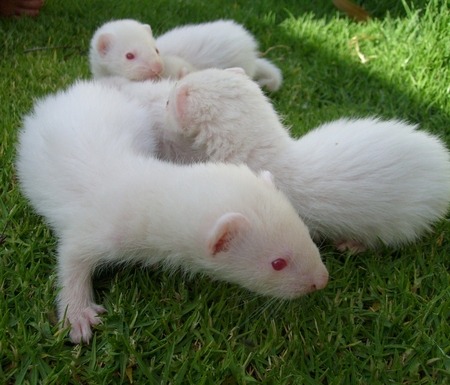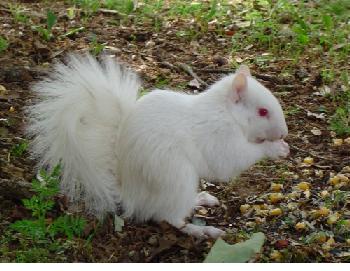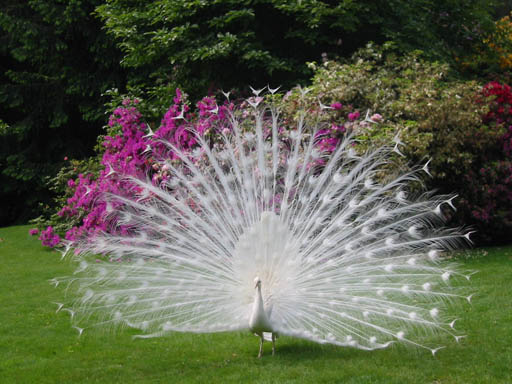|
|
|---|
Friday, January 30, 2009
People far and wide have long used their bodies as canvases to express cultural identity, community status, connection to ancestors or gods — and to mark rites of passage or to ‘wear’ a permanent amulet. 
Although tattoos and piercings are the most popular forms of body art, some more extreme forms are also practiced all over the world such as scarification, branding, implants and surgical alterations.











 Thaipusam is a Hindu festival widely celebrated in Malaysia.Thai refers to the Tamil month of Thai in January and February. Pusam refers to a star that is at its highest point during the festival. The festival honors Subrahmanya — known also as Murugan — the Son of Siva and Parvati who defeated a demon with a spear.
Thaipusam is a Hindu festival widely celebrated in Malaysia.Thai refers to the Tamil month of Thai in January and February. Pusam refers to a star that is at its highest point during the festival. The festival honors Subrahmanya — known also as Murugan — the Son of Siva and Parvati who defeated a demon with a spear. The devotees walk carrying various types of kavadi (burdens), and pots of milk on their heads. But mortification of the flesh by piercing the skin, tongue or cheeks with vel skewers is also common while in a trance.
The devotees walk carrying various types of kavadi (burdens), and pots of milk on their heads. But mortification of the flesh by piercing the skin, tongue or cheeks with vel skewers is also common while in a trance.
The vel kavadi is a form of portable altar decorated with peacock feathers and attached to the devotee through 108 vels pierced into the skin on the chest and back. A metal rod is pierced through the mouth to a Hindu Devotee during the Thaipusam festival in Kuala Lumpur.
A metal rod is pierced through the mouth to a Hindu Devotee during the Thaipusam festival in Kuala Lumpur. Scarification
Scarification
In the U.S., scarification emerged in San Francisco as part of a new body-modification movement in the mid-1980’s. It was originally embraced by gay and lesbian subcultures, said Victoria Pitts, professor of sociology at the City University of New York in New York City. But by the early 1990s, members of a neotribal, or ‘modern primitive’ movement began using scarification. “That movement was interested in reviving or reenacting indigenous body rituals from around the world — trying to get in touch with a more authentic or spiritual experience of the body.” Pitts said.
But by the early 1990s, members of a neotribal, or ‘modern primitive’ movement began using scarification. “That movement was interested in reviving or reenacting indigenous body rituals from around the world — trying to get in touch with a more authentic or spiritual experience of the body.” Pitts said. Over the last seven or eight years, Pitts said, scarification has become remarkably widespread in the U.S., Australia and across Europe, from London to Prague.
Over the last seven or eight years, Pitts said, scarification has become remarkably widespread in the U.S., Australia and across Europe, from London to Prague.
Scarification is done either by cutting repeatedly with a scalpel, using a cauterizing tool, or by ’strike branding,’ which is much like cattle branding.
After cleaning the area and stenciling on the design, the artist begins cutting or burning the skin until reaching the right depth and width. “It can take 15 minutes, but I’ve also done pieces that took eight hours over two days.” said Ryan Ouellette, a body-modification artist who owns Precision Body Arts in Nashua, New Hampshire.
There are several reasons for the growing popularity of scarification. Pitts feels that it’s partly spurred by a nostalgia for a different type of society. “Industrial consumerist cultures are becoming more interested in what they might call primitive societies.” she said. “That’s not wholly new — it’s a fascination that’s centuries old.” The romantic idea of the exotic ethnic dates back to colonial times, she said.
“Industrial consumerist cultures are becoming more interested in what they might call primitive societies.” she said. “That’s not wholly new — it’s a fascination that’s centuries old.” The romantic idea of the exotic ethnic dates back to colonial times, she said.
“Someone stuck in L.A. traffic, wearing a tribal tattoo, has a cultural nostalgia for something we imagine we’ve lost.” Pitts said. “The problem is that we’re taking it upon ourselves to represent a whole range of indigenous cultures in ways that they may not agree with — or may violate sacred spiritual ritual.”
Some scarify merely to be different. “Tattooing has become old hat.” Hemingson said. “If you want to be on the cutting edge — and want to set yourself apart — you can do tongue splitting or scarification.”
Pitts argues that body modification is not really so strange within a culture where identity is often expressed through appearance — which in mainstream society includes fashion consumption, cosmetic surgery, and botox.
On the fringes of society, it’s tattooing, piercing, and scarification.
“Scarification definitely isn’t as popular as tattooing, and I don’t think it ever will be.” said Ouellette. “It still carries a stigma as something really bizarre.”
Branding
Branding is the process for which a white-hot item is used — typically a piece of metal in some particular shape — and pressed into the flesh so that it makes a serious burn and then a permanent scar. In full-scale branding, the iron is heated hot enough and applied long enough that the resulting wound is a third degree burn, which destroys the nerve. These third-degree burns never regain sensitivity. It will make a silver scarred area in the shape of the third degree burn, due to destruction of the entire dermis layer of the skin. The surrounding skin will eventually fill in areas that haven’t been severely damaged, which takes years.
In full-scale branding, the iron is heated hot enough and applied long enough that the resulting wound is a third degree burn, which destroys the nerve. These third-degree burns never regain sensitivity. It will make a silver scarred area in the shape of the third degree burn, due to destruction of the entire dermis layer of the skin. The surrounding skin will eventually fill in areas that haven’t been severely damaged, which takes years.
Implants
Implants are created by placing an object under the skin to create a design. An incision is made near the area the implant will be placed, then a pocket is made and the object is inserted. The incision is then stitched up. Most commonly used materials are titanium, soft solid silicone, and Teflon. Other materials such as stainless steel can be used, but some people can develop an allergic reaction and reject the implant.
Most commonly used materials are titanium, soft solid silicone, and Teflon. Other materials such as stainless steel can be used, but some people can develop an allergic reaction and reject the implant. Once again, my trusty friend Saboma sent me the idea for body piercings with assistance for some pics. Thanks Saboma!
Once again, my trusty friend Saboma sent me the idea for body piercings with assistance for some pics. Thanks Saboma!
Labels: amazing, Beautiful, crazy pictures, Humor, Incredible, Intersting Fact, Unusuals things, weird, Wonderful














